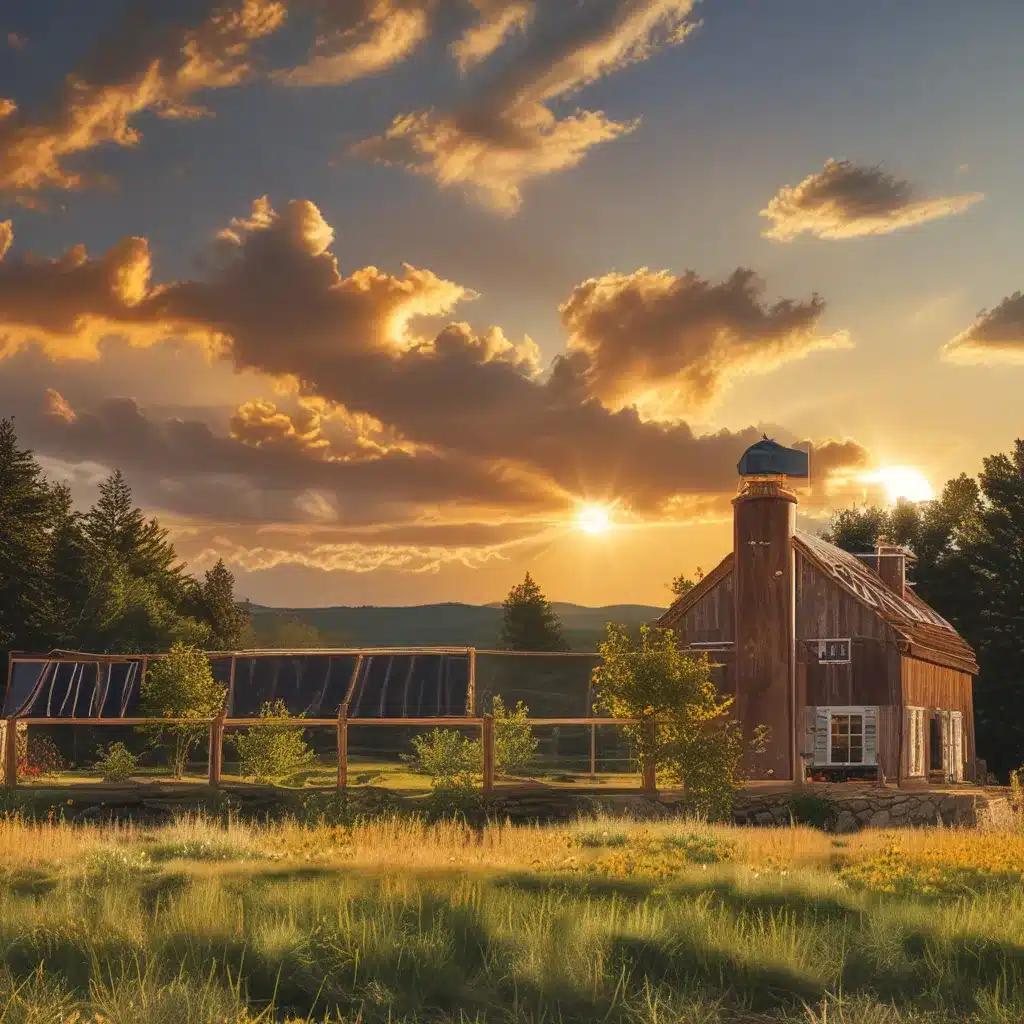
Harnessing the Sun’s Energy: A Homesteader’s Journey
Five years ago, my family and I embarked on a mission to harness the power of the sun and transform our homestead. It was a journey filled with assumptions, challenges, and ultimately, the immense satisfaction of becoming our own energy producers.
You see, our homestead is all about taking that abundant resource – sunlight – and converting it into useful products, whether it’s vegetables, livestock, or now, electricity. Solar power was the natural next step in our quest for self-sufficiency.
Laying the Groundwork: Cutting Costs Before Investing
Before we even considered installing solar panels, we took a hard look at our energy consumption habits. We knew that every kilowatt-hour (kWh) we could shave off our monthly bill would translate to greater savings down the line.
First, we swapped out our old, energy-hungry appliances for more efficient models. We replaced our central air conditioning unit with window units, installed a propane-powered instant water heater, and invested in a large wood-burning stove for winter heating. These simple changes cut our electricity usage in half, putting us well on our way to solar savings.
As the article on Homestead.org states, “Every dollar in electricity you don’t use is a dollar you save.” We took that advice to heart, and it laid the foundation for our solar journey.
Sizing Up the Sun: Calculating the Right System
With our energy usage under control, it was time to turn our attention to solar power. We started by assessing our daily electricity needs. Our homestead uses about 20 kWh during the daylight hours when the sun is shining – the perfect match for a 3,500-watt solar array.
We crunched the numbers and estimated that our solar system would offset around 21 kWh per day, saving us a maximum of $21 per day, or $40 per month on our electricity bill. Not bad for a $3,500 investment!
As the Timber Butte Homestead blog points out, the cost-benefit analysis is crucial when it comes to solar power. We knew that our system would take about 73 years to pay for itself, but we were playing the long game. Solar was an investment in our homestead’s future.
DIY Solar: Tackling the Installation
With our research and calculations complete, it was time to get our hands dirty. I decided to install the solar array myself, drawing inspiration from the Homestead.org article that assured me, “If you can install a ceiling fan without electrocuting yourself, then you can probably do this as well.”
I started by sourcing the essential components: 12 solar panels (305 watts each), a SunnyBoy 3000-TL-US inverter, and the necessary wiring and mounting hardware. I purposely chose a cloudy day to do the installation, ensuring the panels wouldn’t be generating much power and minimizing the risk of shock.
With my trusty rubber gloves on, I followed the step-by-step instructions that came with the inverter. It was a bit more complicated than hanging a ceiling fan, but I took it one step at a time, and before long, I had a fully functional solar system powering our homestead.
Outsmarting the Utility Company
But our solar journey didn’t end there. You see, we decided to take advantage of our local utility company’s “free nights” electricity package. This plan charges a premium during the day but offers free power between 9 pm and 5 am.
By combining our solar system, which generates most of our electricity during the day, with the free nights package, we were able to cut our monthly electricity bill in half. It’s a true David and Goliath moment – we beat the utility company at their own game!
As the Thunderbird Disco blog highlights, the use of lithium batteries like those in Tesla Walls has further enhanced the dynamic of home electricity storage. While we haven’t added batteries to our system yet, it’s definitely an option we’re keeping an eye on.
The Power of the Sun: Weathering the Storm
One of the most satisfying aspects of our solar journey is the peace of mind it’s brought us during power outages. Thanks to the SunnyBoy inverter’s built-in blackout bypass circuit, we can keep the lights on and essential electronics running as long as the sun is shining.
No more fumbling in the dark, lighting candles, or firing up the generator. Our solar panels provide a reliable source of electricity, even when the grid goes down. It’s a homesteading superpower that never ceases to amaze me.
A Homesteading Investment in the Future
As I look back on our solar journey, I’m struck by the long-term benefits it has brought to our homestead. Sure, the initial investment was substantial, but I see it as a form of infrastructure savings – money well spent to secure our energy future.
Solar power is an integral part of our homesteading plan, not the entire plan. It’s just one piece of the puzzle, alongside our energy-efficient appliances, livestock, and other self-sufficient endeavors. But it’s a piece that pays dividends year after year, shielding us from rising electricity costs and providing a reliable, renewable source of power.
So, if you’re a fellow homesteader looking to harness the sun’s energy, I encourage you to take the plunge. With a little research, some elbow grease, and a whole lot of DIY spirit, you too can bring the power of the sun to your homestead. The rewards, both practical and philosophical, are well worth the effort.


